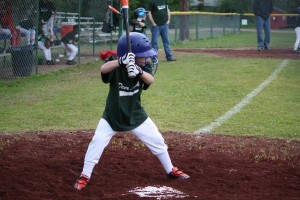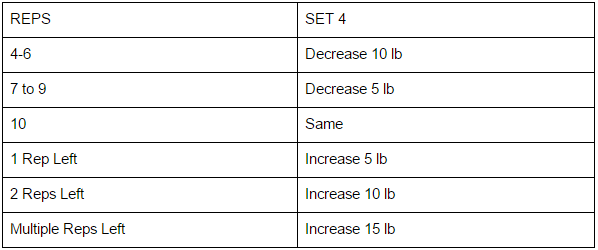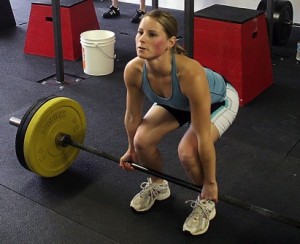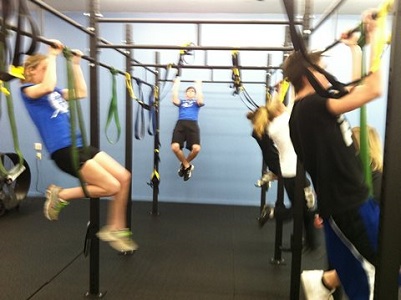Renowned speed expert Latif Thomas explains his short-to-long methodology to developing speed and agility for athletes
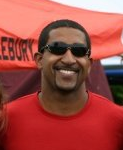
People say all the time that speed and agility for athletes is just like talent: It can’t be taught.
I’m here to show you how that belief is flat-out wrong. Speed is a skill.
The ability to take advantage of the potential of one’s body, and to do so consistently, is a highly technical skill. As coaches and athletes, we often allude to this concept when talking about speed development, but rarely do we discuss how important this statement is and what effects it has on training and performance.
When watching skilled athletes run at full speed, there is commonality in the power and fluidity that these athletes display. They run smoothly and effortlessly. And they run the same way, every time. It is this consistency in the patterning of their movements, the skill of running fast, that creates that “Wow” factor when you see them in action.
Depending on your level of experience in speed development, you may or may not know instantly what these athletes are doing that engenders such awe, but you know it is there. Even though we can’t bring every athlete to elite levels, we can teach them the skill of running fast, where they can apply it to their own particular sport in the context of their own particular level of inherent ability.
Anyone who has learned the skill of running fast knows exactly what it feels like when you reach the point where you’re no longer “trying” to run fast but are seemingly floating over the ground. But there is a progression of development required to consistently reach this point of ease in running. My goal is to explain how to progress an athlete toward the consistent application of the skill of running fast.

To begin, let us establish the foundation of this progression. I believe it to be simply a matter of common sense, i.e., another area in athletic development where we have made something complicated that is, in fact, somewhat simple. In an individual’s speed development, one cannot expect to be able to run fast consistently over 100 meters if they first have not developed the ability to run fast consistently over 80 meters. One cannot expect to run fast consistently over 80 meters if they have not developed the ability to run fast consistently over 60 meters, etc. Therefore, with prescribing a methodology for youth speed training and developing an athlete’s ability to run fast, we must apply a “short to long” approach.
With a short to long approach, we develop an athlete’s proficiency over short distances and progress to longer distances once that athlete has shown that he/she can perform a given distance to the satisfaction of the coach administering the program. Therefore, the onus is on the coach to know what to look for in terms of strengths and weaknesses, how to cue an athlete to effectively perform certain movement patterns, and how to fix mechanical inefficiencies. This is the case regardless of the sport; where the emphasis, time or effort is spent will be contingent on the particular demands of the sport and the particular strengths and weaknesses of the athlete. Thus, for youth speed training, not every athlete will necessarily need to spend equal time developing every component/skill that will be discussed here.
Training Speed and Agility for Athletes: Three Major Categories
For our purposes, we will divide youth speed training “speed development” into three major categories:
Acceleration – the ability to quickly and efficiently get to full speed
Maximum Velocity (VMax) – the ability to maintain top and near top speeds
Speed Endurance – the ability to maintain efficient coordination of the limbs in order to slow the rate of deceleration
NOTE: When it comes to training speed and agility for athletes, there will certainly be a temptation to rush to other areas, progress to longer distances, and run workouts that are more exciting. I must stress that in training inexperienced athletes, we must look at long-term development. I know this can be difficult when we only have athletes for a 12-week season or an 8-week program at a facility. While radical improvements can and will be made over the short term, if your true goal is to maximize the potential of your athletes, then you will not rush them into skills and movements they are not prepared to effectively execute.
Keep in mind that the purpose of this post is to discuss how to progress using a “short to long” program. Certain assumptions must be made, such as the assumption that while implementing a short to long approach to speed development, you are also developing the other four biomotor abilities (strength, coordination, flexibility, endurance), which will allow athletes to progress at the fastest reasonable rate. Thus, the remainder of this post will not go into the biomotor abilities or how to train them but will focus instead on speed progressions. In addition, it is assumed that you understand the basic cues and demands of speed development, basic body angles, rest periods, etc., in that the confines of this post do not allow for intimate discussion of these issues.
Acceleration Development
Acceleration development should be the primary focus of linear speed development for any athlete in any speed- and power-based sport. Success in any sport requiring running is going to be contingent on the athlete’s ability to accelerate to top speed with little wasted motion or energy (i.e., efficiently). So the foundation of any speed development program must spend the appropriate amount of time focusing on developing this skill.
Before we do any running, we must put athletes in a good acceleration position. An athlete cannot expect to perform a skill if they have not experienced the context in which it must be performed. So before beginning acceleration work, I teach the wall/fence drill. This will allow athletes to feel, both statically and dynamically, the ideal position for acceleration. While they will not be able to hold or maintain this position at full speed, they will at least understand experientially what it should feel like. And this serves as a great starting point for teaching athletes self-assessment, a critical tool for maximal development.

Wall/Fence Drill – Have athletes stand with their hands against a wall with their arms parallel to the ground. The feet should be behind the hips and the athlete should be at, approximately, a 45-degree angle to the ground. The torso should be erect, hips forward, and stomach and lower back tight so that one could draw a straight (45-degree) line from the head through the hips to the ankles.
This is the ideal body position that an athlete would be in at the outset of acceleration, particularly when accelerating from the ground, out of a 3- or 4-point stance, starting blocks, etc.
From this position, we implement a marching action. Have the athlete raise the right leg so that the ankle is beneath the hips, toe dorsiflexed. On your command, the athlete will march, alternating legs, for a given number of repetitions. They will finish with their leg in the original starting position.
You will see immediate breakdowns in technique:
- Athletes will break at the hips while performing the march, so that the butt sticks out. The straight line from head to ankle is broken. Cue them to keep their hips forward (squeeze the cheeks).
- They will not keep their heels underneath the hips. Instead the ankle will pump straight up and down, piston like, so that the foot is out past the center of mass. Cue athletes to pull the heel under their butts.
- They will not drive down and back so that each foot strike takes place in the original starting position, behind the hips.
Since athletes cannot perform this basic drill in a confined setting, they certainly cannot be expected to possess the skills required for smooth, powerful, and efficient acceleration to top speed. At the outset of acceleration development, I will have athletes perform this drill before each training session. Additionally, of course, we are teaching traditional speed drills.
So what next?
I like to start with short hill runs. And by short I mean 10-15 meters, max. I put athletes on a fairly steep hill, and we begin with accelerations up this hill. As we learned with the wall march, holding acceleration angles is difficult at this point. With a hill, we can bring the angle to the athlete, putting them in the position we want them to be in. With short hills it is paramount that athletes drive down and back, applying force to the ground. If they don’t, they will immediately feel that their center of mass is behind them and they will not be able to get up the hill with any reasonable speed or power.
Because force application, and the strength demands that come with it, is such an integral part of running fast, we can teach this skill with short hills as well as help athletes experience how much easier and more effective it is when they can activate and fire the glutes so that power is transferred appropriately. At the beginning, athletes will often try to bound up the hill, with the swing leg landing too far in front. This overcompensation is another opportunity to cue the importance of driving down. Like in traditional sprinting, when the foot gets out in front of the hips at foot strike, athletes must spend longer on the ground, which limits force output and slows them down.
Generally, I’ll start with around 10 repetitions with 1-2 minutes rest for teenaged athletes. At this point, I’m not going to get overly technical with the volume. I always err on the side of caution. The more critical element to teach here is self-assessment. And this goes for all phases of speed development. Once you’ve established some of the fundamental skills that athletes should be trying to learn with a particular workout or series of workouts, they must begin to identify positives and negatives on their own. I constantly ask them, “How did that feel?” “What did you feel?” “What were your arms doing?” etc.
Ask questions that get them to analyze their performance. If you are giving them good feedback with each interval, they will begin to come back and tell you how they felt, what felt right, what felt wrong, what they were thinking, etc.
This is an incredibly important component of training speed and agility for athletes and should not be overlooked. But to make it happen, you must be able to give appropriate comments that facilitate their learning.
Once athletes have become proficient at the short hill runs extending out to 20m, I will take them to the track or to a turf field. I do not advise doing speed work on grass as it is an invitation to injury. From here we will start out at 20m, starting from a variety of positions on the ground, a crouch, a 3-point stance, etc. I’m looking for the same aggressiveness that was required to accelerate up the hill to now be transferred to a flat surface. Once I see that, with the mechanical elements in place, we’ll extend out to 30 meters, then to 40. Again, the progression is logical. What you should be looking for in graduating your athletes to longer runs is consistency in their movement patterns, proper running mechanics, and an improved ability to tell you what they did right and what they did wrong without you having to tell them first. The best way to assess consistency is to time the athletes’ intervals. When they are consistently running the same times within .1-.2 seconds, it is likely that they are doing the same things each time. At these shorter distances, there is less room for error, but developing these skills early will pay great dividends at longer, more challenging distances.
Now that we are out to the 30-40 meter range, athletes are no longer accelerating. In fact, the vast majority of athletes will be at full speed by 30 meters, so this is the time where we will begin adding Maximum Velocity components to training. If an athlete is not reaching full speed until after 30 meters, they are likely holding back or have mechanical problems that are limiting proper acceleration. These athletes are not ready for longer sprint work.
Maximum Velocity (VMax)
Even elite sprinters can only maintain top speed for around 2 seconds before beginning to decelerate. Thus, VMax work is geared more toward maintaining near top speeds for longer distances (reducing the rate of deceleration) than running at full speed because the time spent at full speed is quite short. Again, this post is not a discussion of this type of training but rather guidelines for how to implement it.
I am a big fan of fly runs. This is where you will have a buildup zone, a fly zone, and a deceleration zone. With our acceleration work, we’ve been practicing in the 30-40m range, so we will now add a fly to our work at these distances.
Our initial runs will be “fly 15’s.” Set up a cone at the start, at 20m, at 35m and at 60m. The breakdown is this: 0-20m is the acceleration zone, 20-35m is the fly zone, and 35-60m is the deceleration zone. The final 20 meters should be a slow deceleration to a full stop. Since we’ve been focusing on acceleration development thus far, athletes should be quite proficient through 20m. Our new focus is on what they should be doing while at full speed.
Cue athletes to run hips tall and with a foot strike beneath the hips, not behind or far in front. It is important for young athletes especially to focus not on straining to run faster but rather on executing a consistent pace. Our goal here is maximum speed, minimum effort. Again, we can assess consistency here by timing athletes through the zones. If their time to the first cone is inconsistent, it will likely lead to inconsistencies in the fly portion. Because we’re breaking the run into sections, we can identify where things are going wrong (and right) and give appropriate solutions. I strongly recommend videotaping these runs and breaking down the film with your athletes.
As athletes become consistent and proficient at fly 15’s we can simply extend the distance with time. Generally, for athletes who require extended sprints in their training, our meat and potatoes workouts are fly 30’s and fly 40’s. Volume is dependent on the particular athletes. When times fall off, the workout is over. As a general rule, with teenage athletes, we look at a total volume in the range of 250-300 meters before fatigue begins to adversely affect the quality of the workout. But again, this is a generality and you must prescribe distances appropriate for your athletes—thus, the art of coaching.
Because we are implementing a short to long progression, even with VMax work, you are still working on acceleration development. Athletes must accelerate properly to reach true to top speeds. So, where I was previously doing acceleration work twice per week as we made our way to the 30-40m range, I will now do one day of acceleration work and one day of VMax work. When you think about it, we’re getting more bang for our buck because we’re still getting two days of acceleration work in, but we’re also developing our ability to maintain at top speed. Since acceleration work is paramount in almost every sport, we can maintain constant focus on that skill because we’ve mastered it. Consistent acceleration paves the way for maximal development at longer distances.
We also use another type of workout for VMax development. It goes by many names, but we call it “Sprint-Float-Sprints.” This is simply a more advanced progression of the fly XX. Here the goal is to teach athletes to relax once they reach top speed, but without slowing down. This is one of the hardest things for coaches to teach and athletes to learn. Athletes simply must experience this in order to understand it. I’ve never been able to come up with a universally understood cue that got athletes to do this right. The important thing to convey is this: Once an athlete reaches top speed, continuing to try to accelerate will only slow the athlete down.
When timing experienced athletes in this type of workout, they run faster in the float—or relaxation portion—than when they are pushing to run faster. To most athletes, this doesn’t make sense at first, but there is a reason that you see elite athletes with relaxed faces, shoulders, hands, etc. at the end of a race. They know that they must stay within a certain confine to run faster. If they begin to press, they will break down mechanically and slow down. So, when doing Sprint-Float-Sprints with your athletes, you must get them to understand this. One very clear way to tell if athletes are slowing down in the float zone vs. relaxing is by watching their torso. If the shoulders drop back behind the hips (foot strike will also take place in front of the hips), then you know the athlete is doing it wrong.
Here is how to set up the workout. Set up a cone at 20m, 30m, 40m, 50m, and 70m. From 0-20m athletes accelerate normally, 20-30m athletes will sprint aggressively, 30- 40m athletes go into a float, 40-50m back into an aggressive sprint, 50-70m athletes should slowly come to a stop.
Generally, I stick to this distance throughout the season. If an athlete excels, I may bring the zones from 10m to 15m. Because this workout is quite taxing, both physically and mentally, we don’t do a large number of them in a workout. We may do a max of 4 or 5 total. As with fly runs, getting this on tape is an incredibly valuable tool. With so much going on from zone to zone, it really is difficult to assess an athlete live and time their zones. You really have to pick one or the other.
With this workout, it would be the alternative to running, say, fly 40’s. Depending on the sport and time of year, it is unlikely that I will get away from pure acceleration work entirely, but there are exceptions to every rule. Now that athletes have become proficient in acceleration patterns and maintaining top/near top speeds, we can add a new element to training:
Speed Endurance (SE)
With speed endurance, we want to be specific to the demands of the sport. For our discussion, there are two types of speed endurance: Alactic speed endurance and Glycolytic speed endurance. Without turning this into a lecture on energy systems, alactic SE is for runs of 30-80m with rests periods of 1-3 minutes between reps and 5-10 minutes between sets. Glycolytic SE is for runs of 80-150m, with rest periods of 5-6 minutes between reps and 6-10 minutes between sets.
At this point, you should have a clear understanding of how progressing distances works. Fundamentally it’s going to be the same here, but again, sport specificity comes into play. There is little need to focus on glycolytic SE if your athletes are never going to have to sprint for longer than 60-70m on a fairly regular basis, i.e., almost every sport outside of track and field. Instead, I would focus on alactic SE. Athletes are going to be competing in a state of fatigue for a good portion of their games, so short sprints with relatively short rest periods are going to prepare them better for the demands of their sport. Because you’ve taught them proper acceleration mechanics and developed the skill of high speed maintenance, they will be able to run faster and longer while tired. If you had not done this progression in this way, once they got tired (in a workout or competition) they would immediately regress from a mechanical and technical standpoint, which of course makes them less competitive athletically and at increased risk of sustaining an injury. But because they have learned the skill of sprinting, as well as self-assessment, they can focus and fall back on the previously learned and repeated movement patterns that lead to running faster and winning more.
With track and field sprinters, the need for longer speed endurance runs is obvious. It is important, however, that we adhere to these rest protocols. I find that many track coaches can’t overcome the urge to reduce rest periods, believing them to be too long to be effective. They are not.
So how is it all put together?
Putting Together Acceleration, VMax, and SE in the Context of a Season
If you have a true preseason or offseason, that is where I would put in the short hill accelerations or even flat surface acceleration work. But if you’re working on limited time frames of a typical season, here is how I would structure the progression, assuming you are working on speed twice per week.
This, of course, is a general guide. Look at it in terms of progressing in distance. As far as volume, these are estimates. Some athletes are workhorses; others are not. There is no magic formula for determining the perfect volume for a workout or workout period, and there are many other variables to consider in prescribing speed sessions. It should vary by athlete based on training age, experience, skill, etc.
M: 8-10 x10m hills
Th: 8-10 x 15m hills
Once athletes have begun to improve:
M: 8-10 x 20m hills
Th: 8-10 x 20-30m acceleration development on flat surface
Once proficiency is shown:
M: 8-10 x 30m
Th: 4x30m, 3-4 x 40m
Once athletes have developed consistency in their acceleration development:
M: 10 x 30m
Th: 6-8 x fly 15’s with a 20m buildup
Choices from here vary by sport. Non-track coaches will likely stick with a format along these lines. Remember, you don’t always have to move up in distance; you can do repeat 10’s, 20’s, etc. Make it specific to your sport. In fact, you should move around in volume, distance, and intensity so that athletes do not adapt and become stagnant in their training.
If athletes aren’t going to maintain an all-out sprint for more than 15-20m, spend the bulk of time on various components of acceleration development, speed endurance, and some VMax work:
M: (Acceleration work) 5x10m, 5x20m, 5x30m (full recovery)
Th: (SE) 2 sets of 6x25m with 1 min rest between reps, 5 min between sets
Do a VMax workout every 3 or 4 workouts.
With track and field, you have to consider meets as part of your program design. So if an athlete is running the 100 and 200 in a meet plus field events, acceleration work and VMax work may be part of that week’s training, generally speaking. Of course, you must consider the above factors, time of year, etc.
For a 100/200m runner who has progressed through the requisite acceleration and VMax skills:
M: 5x30m out of blocks on the straight, 3 x 60m out of blocks on the turn (float at 40m)
Th: 4x fly 30’s with a 20m buildup, 1 x 120m
The meet will involve speed endurance elements so we don’t have to go heavy on that during the week. And both the Monday and Thursday workout cover some degree of speed endurance work as well.
Keep in mind that when doing VMax work, you’re still doing acceleration development. You have to accelerate to get to top speed. When you’re doing (Glycolytic) Speed Endurance, you’re doing both acceleration work and VMax work. To get the most out of a longer run, an athlete must be capable of effectively performing a shorter run. It is for this reason that the short to long approach to youth speed training and development is the optimal method for developing the fastest athletes.
Get Certified
If you understand that speed and agility are the most coveted skills your athletes and clients need you to teach them and you want to stay on the cutting edge of what is being taught by the most effective speed coaches in the field, then you’ll want to invest in the IYCA Youth Speed Specialist Level I Certification. This is, without question, the most comprehensive and up to date linear and multidirectional speed and agility for athletes training course on the market. Learn more on youth speed training.
15 Free Speed & Agility Drills
Get access to 15 free Video drills to try with your athletes that focus improving their balance, coordination, and speed.


